Advancements in LED Technology for Marine Explosion-Proof Lighting
Marine environments, characterized by their harsh conditions and the presence of flammable gases, vapors, and dust, necessitate stringent safety measures. Traditional lighting solutions often fell short in these challenging settings. However, advancements in LED (Light Emitting Diode) technology have brought about significant improvements in marine explosion-proof lighting, enhancing safety, efficiency, and durability.
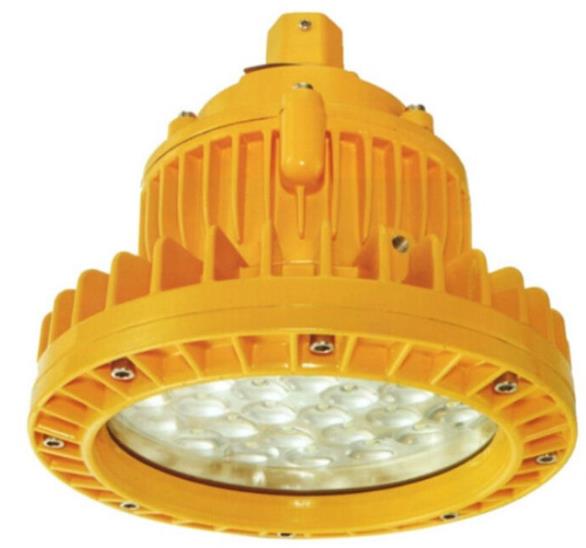
Why Need LED Explosion-Proof Lighting in Marine Environments
Marine vessels and offshore platforms are susceptible to explosive atmospheres due to the presence of flammable materials such as fuel, chemicals, and gases. Ensuring safe lighting in these environments is critical to prevent accidents and ensure the well-being of personnel.
- Flammable Materials: Marine vessels and offshore platforms often carry flammable materials such as fuels, chemicals, and gases. These materials can create explosive atmospheres, particularly in confined spaces like engine rooms, fuel storage areas, and cargo holds.
- Harsh Conditions: Saltwater corrosion, high humidity, extreme temperatures, and constant vibrations are common in marine settings. These conditions can quickly degrade traditional lighting fixtures, leading to increased maintenance and replacement costs.
- Regulatory Compliance: The marine industry is subject to strict safety regulations and standards to prevent accidents and ensure the safety of personnel and equipment. Compliance with these regulations requires specialized lighting solutions designed to withstand the harsh conditions and minimize risks.
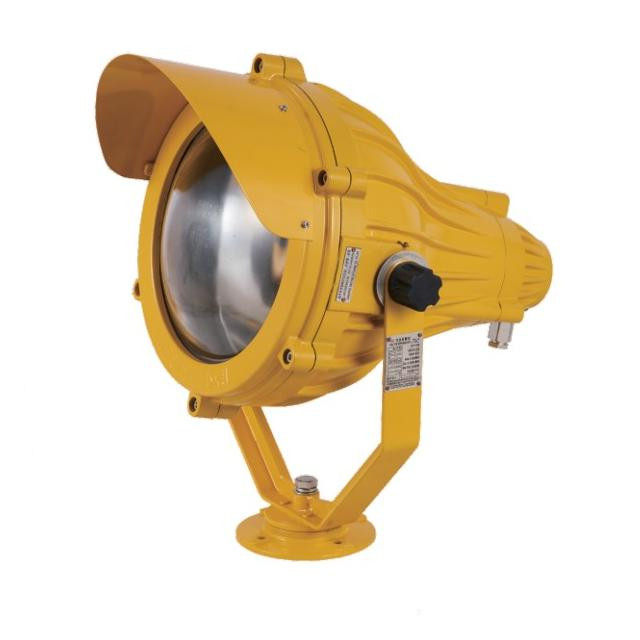
Key Advancements in Marine LED Explosion-Proof Lighting
1. Energy Efficiency
One of the most notable advancements in LED technology is its energy efficiency. LED lights consume significantly less power compared to traditional incandescent and fluorescent lamps. This reduction in energy consumption is crucial for marine vessels and offshore platforms where energy resources are often limited and costly. By using less power, LED lights help reduce operational costs and extend the life of battery-powered systems, which is especially beneficial in emergency lighting scenarios.
2. Enhanced Durability and Longevity
Marine environments are notoriously harsh, with exposure to saltwater, humidity, extreme temperatures, and constant vibrations. LED lights are inherently more durable than traditional lighting solutions, thanks to their solid-state construction. Modern LED explosion-proof lights are designed with corrosion-resistant materials and sealed enclosures that protect against moisture and dust ingress. Additionally, LEDs have a much longer lifespan, often exceeding 50,000 hours, which reduces the frequency of replacements and maintenance, thereby lowering operational costs and downtime.
3. Improved Safety Features
Safety is paramount in marine environments, where the presence of flammable gases and vapors can create explosive atmospheres. LED explosion-proof lights are designed with advanced safety features to mitigate these risks. They operate at much lower temperatures than incandescent and fluorescent lights, significantly reducing the risk of igniting flammable materials. Moreover, their robust, sealed enclosures prevent the ingress of dust, water, and gases, further enhancing safety in hazardous areas such as engine rooms, fuel storage areas, and cargo holds.
4. Superior Light Quality and Flexibility
LEDs provide high-quality illumination with excellent color rendering and uniform light distribution, which is crucial for visibility and safety in marine settings. This superior light quality enhances operational efficiency and safety by improving visibility in critical areas. Additionally, LEDs can be customized to produce different color temperatures and beam angles, providing tailored lighting solutions for specific needs, such as navigation lights, deck lights, and work area lights.
5. Smart and Connected Lighting Solutions
The integration of smart technology with LED lighting has opened new possibilities for marine explosion-proof applications. Smart LED systems can be remotely controlled and monitored, allowing for real-time adjustments in lighting levels, scheduling, and diagnostics. This connectivity enhances operational efficiency and safety by ensuring optimal lighting conditions and enabling predictive maintenance. For instance, sensors can detect when a light is about to fail, allowing for proactive maintenance and reducing the risk of unexpected outages.
6. Compliance with Stringent Standards
LED flood explosion-proof lights for marine environments are designed to meet stringent safety standards and certifications, such as ATEX (Atmosphères Explosibles), IECEx (International Electrotechnical Commission System for Certification to Standards Relating to Equipment for Use in Explosive Atmospheres), and marine-specific standards like Lloyd’s Register and ABS (American Bureau of Shipping). These certifications ensure that the lighting solutions are safe and reliable for use in hazardous marine environments, providing assurance to operators and regulatory bodies.
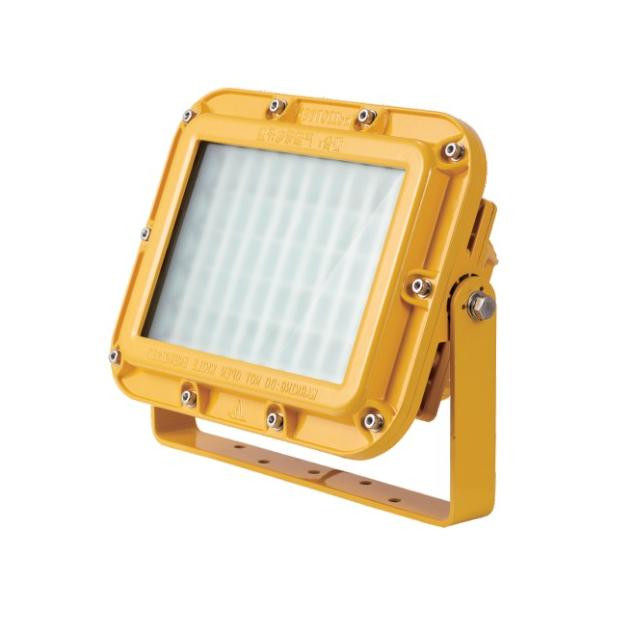
Applications of Marine LED Explosion-Proof Lighting
| Application Area | Description | Example Lighting Fixtures |
| Shipboard Interiors | Engine rooms, pump rooms, boiler rooms, bilges (areas below decks that collect water) | LED explosion-proof linear lights for general illuminationLED task lights for focused work areasLED explosion-proof wall packs for corridors |
| On-Deck Areas | Cargo holds, hazardous material storage areas, fueling stations | Explosion-proof flood lighting for overall illuminationLED explosion-proof spotlights for security and inspection |
| Offshore Oil Rigs & Platforms | Drilling areas, processing modules, living quarters | LED explosion-proof high bay lights for large workspacesExplosion-proof well lights for specific drilling zonesLED explosion-proof hand lamps for portable use |
| Docks & Ports | Loading/unloading areas, fuel depots, chemical storage tanks | LED explosion-proof bollard lights for perimeter securityexplosion-proof canopy lights for covered walkways portable explosion-proof lights for temporary illumination |
| Shipyards & Marine Construction | Dry docks, welding areas, painting booths | LED explosion-proof temporary string lights for overall workspace lightingLED explosion-proof task lights for close-up workLED explosion-proof magnetic base lights for easy positioning |
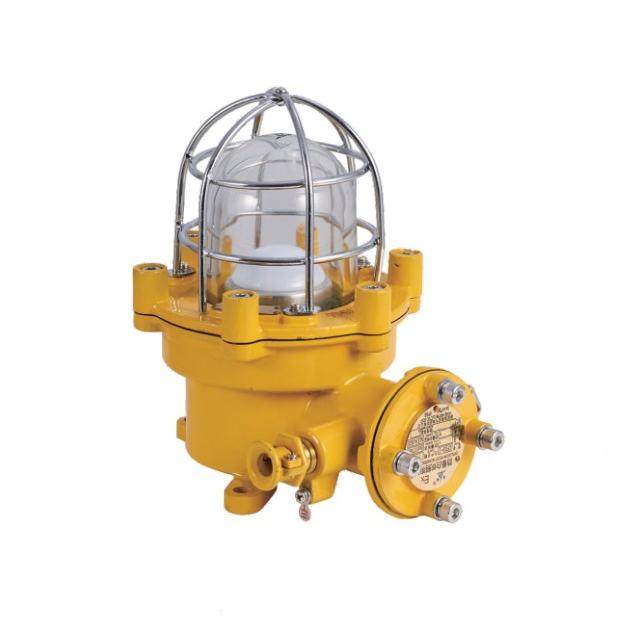
Future Directions and Innovations in Marine LED Explosion-Proof Lighting
1. Energy Efficiency and Sustainability
- Advanced LED Technology: Development of more energy-efficient LEDs with higher lumen output and lower power consumption.
- Smart Lighting Systems: Integration of smart sensors and controls to adjust lighting based on occupancy and ambient light, further reducing energy usage.
- Renewable Energy Integration: Use of solar and wind power to supply energy to LED lighting systems, reducing reliance on traditional power sources.
2. Improved Safety and Durability
- Enhanced Explosion-Proof Designs: Innovations in materials and construction techniques to improve the robustness and safety of explosion-proof lighting fixtures.
- Corrosion Resistance: Development of coatings and materials that offer better resistance to saltwater and harsh marine environments, extending the lifespan of the lights.
3. Advanced Control Systems
- Remote Monitoring and Control: Implementation of IoT (Internet of Things) technologies to enable remote monitoring and control of lighting systems, allowing for real-time adjustments and maintenance.
- Automated Maintenance Alerts: Systems that can predict and alert for maintenance needs based on usage patterns and environmental conditions, reducing downtime and maintenance costs.
4. Customization and Versatility
- Modular Lighting Solutions: Design of modular lighting systems that can be easily customized and configured for different marine applications.
- Adaptive Lighting: Development of lighting systems that can adapt to different marine operations, providing optimal lighting for various tasks and conditions.
5. Regulatory Compliance and Standards
- Enhanced Compliance Features: Development of lighting systems that not only meet but exceed international safety standards and regulations for explosion-proof lighting.
- Certification and Testing: Increased emphasis on rigorous testing and certification processes to ensure the highest levels of safety and reliability.
6. Cost-Effectiveness
- Lower Production Costs: Advances in manufacturing processes to reduce the cost of producing explosion-proof LED lighting, making it more accessible.
- Longer Lifespan and Reduced Maintenance: Development of LEDs with longer operational life and reduced maintenance requirements, leading to lower overall costs.
7. Integration with Other Systems
- Interoperability: Ensuring that marine LED lighting systems can seamlessly integrate with other onboard and offshore systems, such as communication and navigation systems.
- Data Analytics: Using data collected from lighting systems to analyze and improve operational efficiency and safety.
8. Environmental Impact
- Eco-Friendly Materials: Use of environmentally friendly materials in the production of LED lighting fixtures.
- Reduction of Light Pollution: Design of explosion-proof lighting systems to minimize light pollution, which can be harmful to marine life.
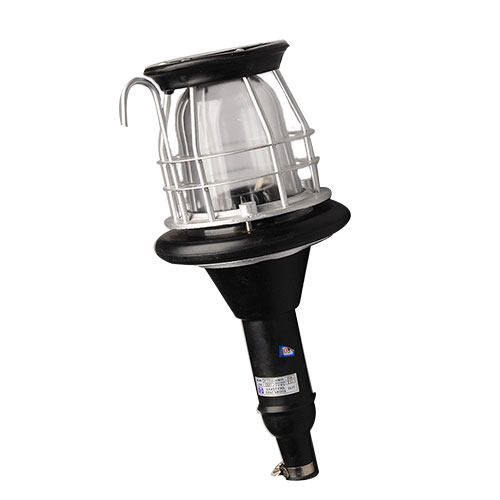
The advancements in LED technology have significantly improved the capabilities of explosion-proof lighting for marine environments. These innovations offer safer, more efficient, and durable solutions, ensuring secure and sustainable operations in the demanding conditions of the marine industry.


